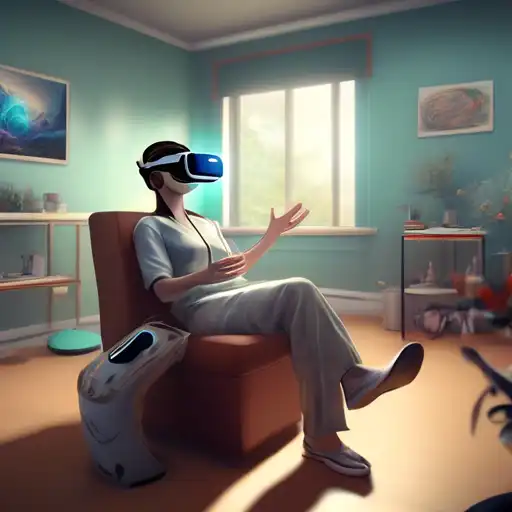The Transformative Power of Virtual Reality in Therapeutic Practices
Virtual Reality (VR) technology has transcended its initial entertainment-centric applications to become a groundbreaking tool in the field of therapy. By creating immersive, controlled environments, VR is revolutionizing the way therapists treat a variety of psychological and physical conditions. This article explores the innovative ways VR is being utilized in therapeutic settings, offering new hope and possibilities for patients worldwide.
Understanding VR Therapy
VR therapy involves the use of virtual reality technology to simulate environments where patients can confront and work through their issues in a safe, controlled setting. This method has shown remarkable efficacy in treating conditions such as PTSD, anxiety disorders, and phobias. By gradually exposing patients to their fears within a virtual space, therapists can help them develop coping mechanisms in a way that feels real yet is entirely risk-free.
Applications of VR in Therapy
The applications of VR in therapy are vast and varied. Below are some of the most impactful uses:
- Exposure Therapy: VR allows patients to face their fears in a controlled environment, making it an ideal tool for exposure therapy.
- Pain Management: Studies have shown that VR can significantly reduce pain perception during medical procedures by distracting the patient with immersive experiences.
- Social Skills Training: Individuals with autism or social anxiety can benefit from VR simulations that teach and reinforce social interactions.
- Physical Rehabilitation: VR games and exercises can motivate patients undergoing physical therapy, making the recovery process more engaging and measurable.
The Benefits of VR Therapy
VR therapy offers numerous advantages over traditional therapeutic methods. It provides a safe space for patients to explore and confront their issues without the real-world risks. Additionally, VR therapy can be more accessible and cost-effective, reducing the need for physical resources and allowing therapists to reach a broader audience. The immersive nature of VR also enhances patient engagement and retention, leading to more effective treatment outcomes.
Challenges and Considerations
Despite its potential, VR therapy is not without its challenges. The cost of VR equipment and the need for technical expertise can be barriers to widespread adoption. Furthermore, the effectiveness of VR therapy depends on the quality of the simulations and the skill of the therapist in integrating this technology into treatment plans. As the field evolves, ongoing research and development are essential to overcome these obstacles and fully realize the benefits of VR in therapy.
Looking to the Future
The future of VR in therapy is bright, with continuous advancements in technology making it more accessible and effective. As researchers uncover new applications and refine existing ones, VR has the potential to become a staple in therapeutic practices. For those interested in exploring the intersection of technology and mental health, the possibilities are as vast as the virtual worlds we can create.
For more insights into how technology is transforming healthcare, check out our articles on Technology in Healthcare and Innovative Therapies.
